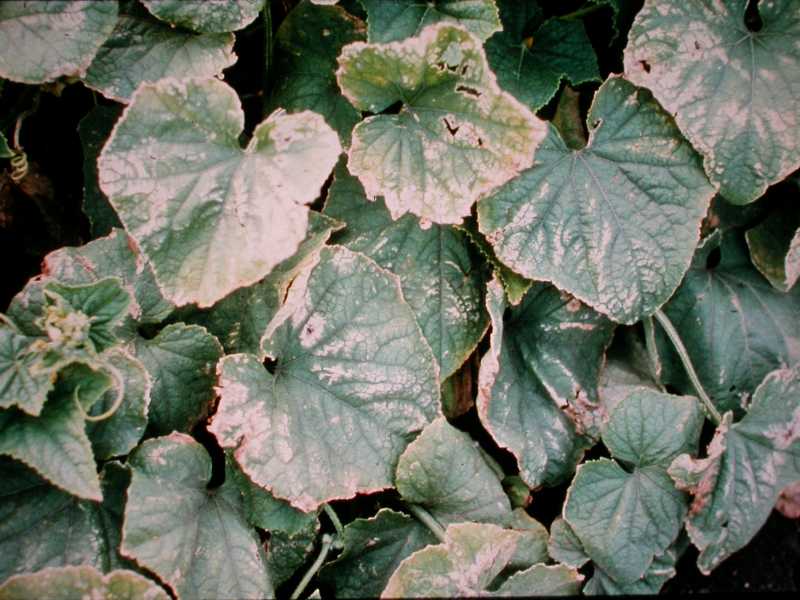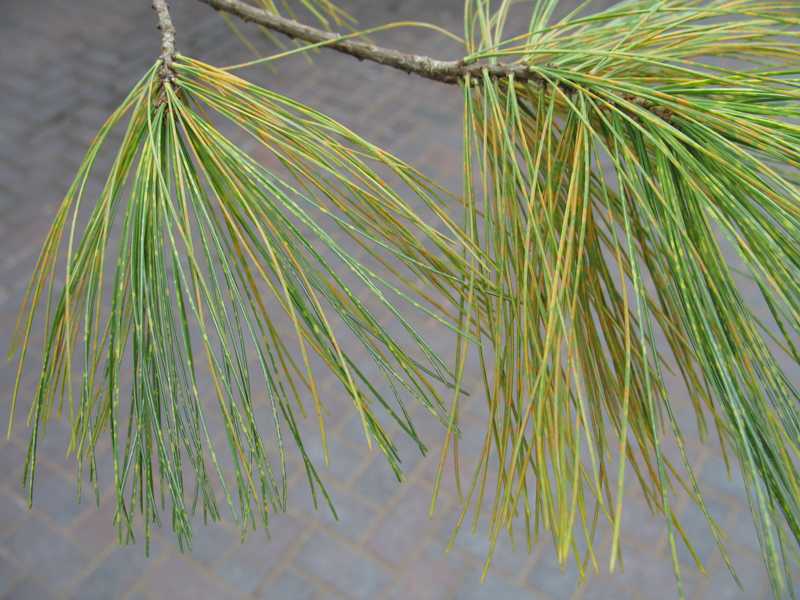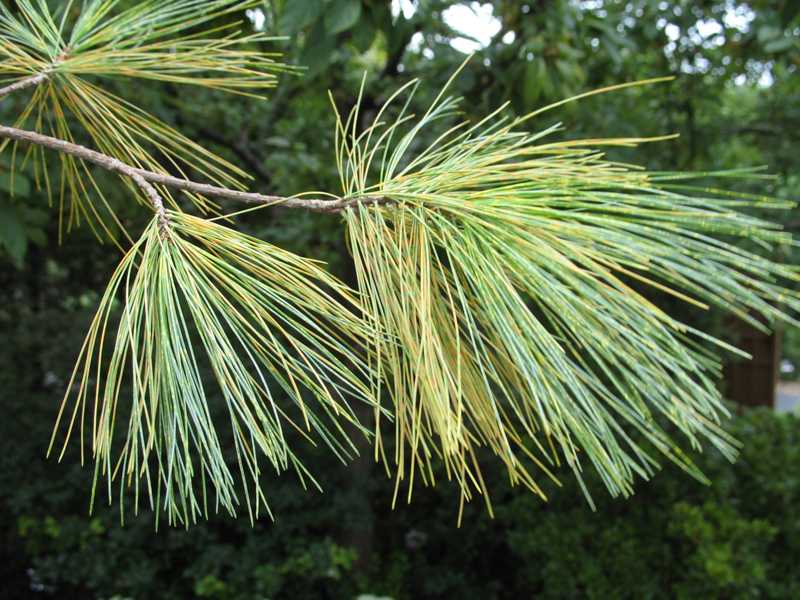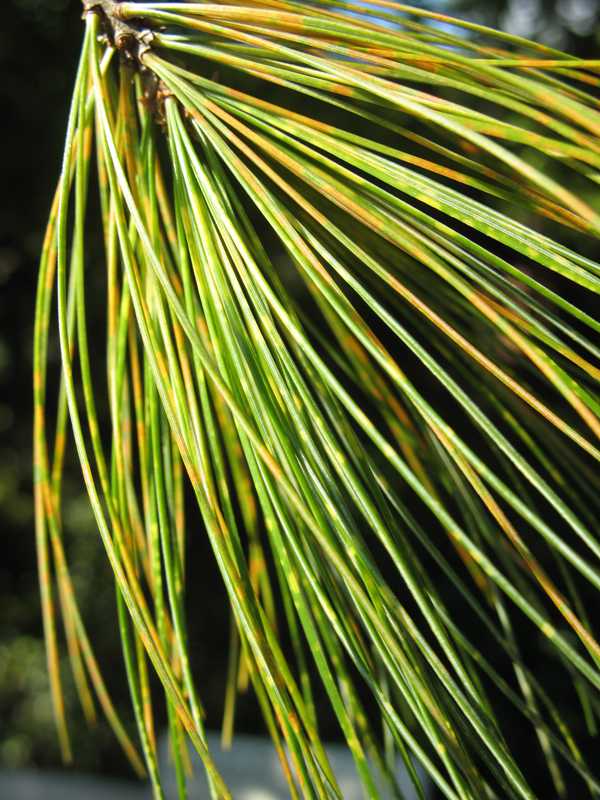 |
Bronzing on leaves of American linden (Tilia) caused by ozone |
Ozone is the most damaging air pollutant to plants. The action of sunlight (ultraviolet radiation) on molecular oxygen and oxides of nitrogen spontaneously generates ozone. The organic compounds in automobile exhaust enhance ozone accumulation. Ozone can move across great distances to cause damage to plants far from its origin and is therefore classified as a non-pointsource pollutant.
Symptoms and Diagnosis
The extent of damage depends on the concentration of ozone, the duration of exposure, and plant sensitivity. Acute damage to deciduous trees causes marginal leaf burn and dot-like, irregular-shaped lesions or spots that may be tan, white, or dark brown. Symptoms may spread over entire leaves. Another common symptom is bleaching of the upper leaf surface. Broad-leaved trees often exhibit these symptoms of stippling or red-purple or necrotic flecks on the upper leaf surface only.
Acute damage to conifers causes browning at the same point on all needles in a bundle (needle cluster). Other symptoms include chlorotic (yellow) mottling or necrotic (brown to black) banding, tip burn, dwarfing, and tufted appearance due to early defoliation of older needles. Damage from ozone can be confused with other problems and, if suspected, a more detailed reference material (such as Diseases of Trees & Shrubs by Sinclair, Lyon, & Anderson) should be consulted.
Life Cycle
Ozone builds up to phytotoxic levels in the atmosphere during warm, sunny weather when pollutants accumulate in stagnant air. Accumulation often occurs during atmospheric inversions in valleys and basins bounded by mountains.
Ozone may cause damage to plants far from the source of its precursors as masses of polluted air move overland. Ozone from natural sources (carried from the stratosphere or generated during electrical storms) alone is inconsequential for plant health, but may be added to that generated by humans.
Integrated Pest Management Strategies
1. Maintain plant vigor. Plants that are in good health resist all type of injury better than weakened plants. Water during drought periods. Fertilize following a soil test report. Soil should be porous, well-draining, and not compacted.
2. Select plants. Select plants tolerant of air pollutants.
3. Reduce emissions. Reduce emissions from the source when possible.
Organic Strategies
Strategies 2 and 3 are strictly organic approaches. Using an appropriate organic fertilizer would be a viable organic approach to Strategy 1.
More images:
 |
| Damage to muskmelon leaves (Cucumis melo) caused by ozone |
|
 |
| Ozone damage on white pine (Pinus strobus) |
|
 |
| Close-up of needles of white pine (Pinus strobus) damaged by ozone |
|
 |
| Ozone damage to white pine (Pinus strobus) |
|
 |
| Close-up of ozone damage on white pine (Pinus strobus) |
|
|